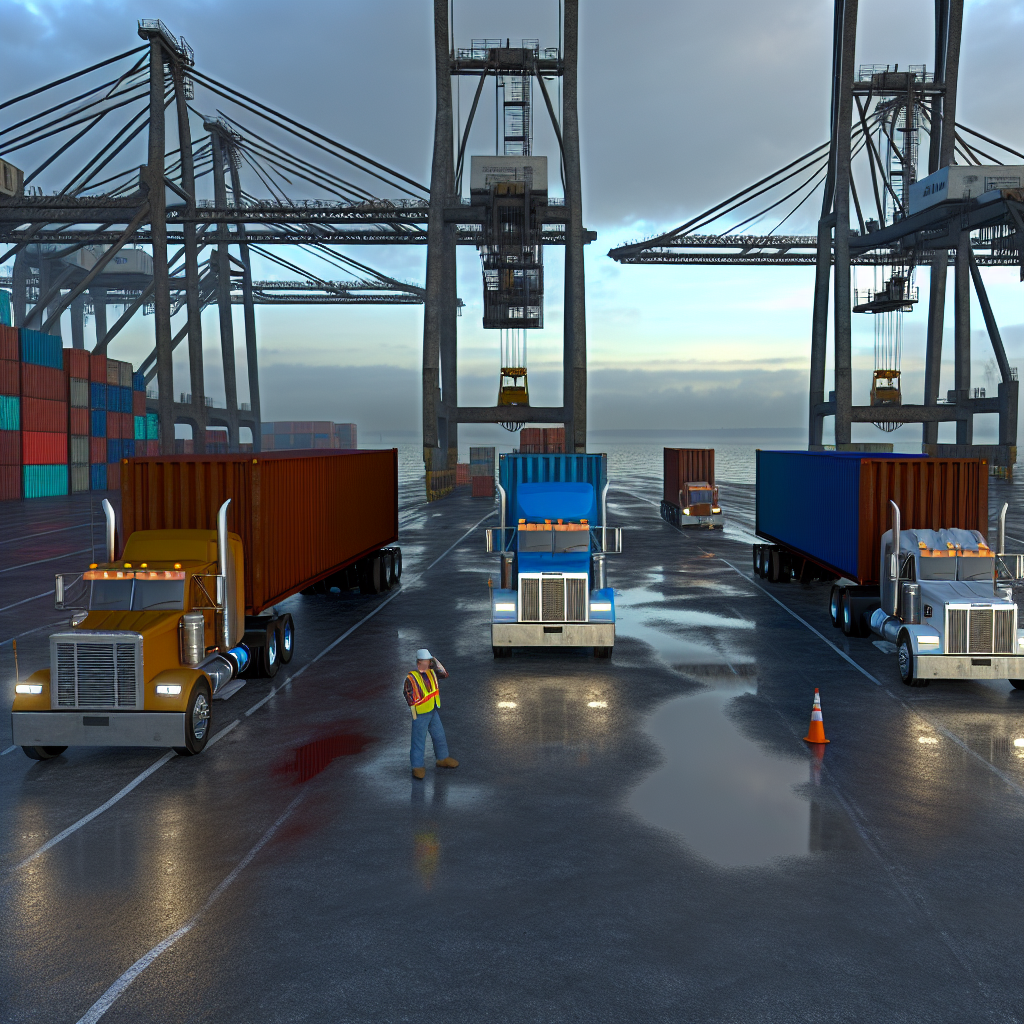Charleston’s latest box counts point to a market in transition, with softer import momentum as carriers redraw networks and shippers recalibrate flows. While the headline is fewer TEUs on the docks, the underlying story for the trucking community is shifting demand by lane, more transshipment uncertainty, and a near-term rebalancing of drayage needs across the Southeast.
Fresh operating data confirm the downshift. The Port of Charleston handled 212,363 TEUs in September — a notch below plan — even as the state’s inland rail network posted standout gains, led by Inland Port Greer’s record September activity. For motor carriers, that mix means fewer same-day import pulls off marine terminals but a healthier pipeline of rail-driven pickups and drops inland.
One big reason volumes are wobbling: a fast-moving reset in global routings. New U.S. and Chinese port fees that took effect on October 14 are already scrambling capacity maps as operators steer U.S.-linked ships away from China and vice versa. The immediate impact has been fewer vessels available on certain strings and a jump in benchmark trans-Pacific rates — a recipe for bunching, schedule changes and late-night appointment reshuffles for dray carriers.
Charleston also sits in a regional chessboard that’s changing by the week. Just down I-95, Savannah posted roughly 450,700 TEUs in September, up 12% year over year — evidence that some importers front-loaded cargo and leaned harder into alternative gateways. If those flows persist, expect tighter chassis turns and more live-load requests around Savannah while Charleston’s day-to-day import demand runs a touch cooler.
For carriers serving South Carolina manufacturers and retailers, the rail story matters as much as the quay. September brought an 18% year-over-year jump in Greer rail moves and a record at Inland Port Dillon, signaling steady freight velocity into the Upstate and Pee Dee. That supports predictable roundtrips and drop-and-hook options even as ocean schedules get choppy — a useful hedge for fleets managing utilization through Q4.
Capacity investments should also cushion the landing. Construction milestones at the near-port Leatherman Rail Facility — including the erection and commissioning of six electric RMG cranes — keep the project on a 2026 debut path with up to 1 million annual rail lifts. For truckers, that promises more near-port ramp work, denser appointment windows and new drayage revenue streams once live.
What to watch next if you’re dispatching in and around Charleston: vessel rotation changes linked to the fee regime, which can trigger short-notice gate hour shifts and weekend pull opportunities; a possible tilt toward transshipment via Korea or other hubs that adds variability to ETA/availability; and rate firmness on long-haul intermodal that could divert some freight away from over-the-road. Spot checks show rates firming alongside the Shanghai index pop — a sign that network stress offshore can ripple quickly into inland appointment backlogs.
Playbook for fleets and shippers: keep chassis reservations flexible and pursue dual/tri-pool access where available; pre-clear for extended gate moves to capture bunching; push for rail diversions to Greer/Dillon when demurrage risk rises; and map alternate reloads on I‑26/I‑85 to protect driver miles if a vessel slide thins same-day port work. The trade reset is real, but Charleston’s growing inland rail and upcoming near-port capacity give Southeast truckers more knobs to turn — even when the ocean side gets noisy.
Sources: FreightWaves, Reuters, Maritime Professional, Container Management, Container News
This article was prepared exclusively for TruckStopInsider.com. Republishing is permitted only with proper credit and a link back to the original source.





